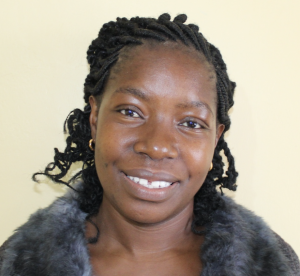"This water point provides for us water throughout the year, but unfortunately the water is unclean and unsafe for human consumption. Since we have no alternative, we just use it in its state. I am tired of paying hospital bills due to waterborne and water-related diseases. If this water point is protected, we will be saved from these diseases," said Julius Butiku, a 34-year-old farmer and father in Mulwanda Village.
Mulwanda Village has beautiful scenery from trees, grass, flowers, and other plants. The landscape is on a gradual slope with well-defined paths interconnecting homesteads. The roads are accessible and the most common mode of transport is motorcycle.
People in this area earn their living through farming. They plant foods like maize, sweet potatoes, bananas, sugarcane, vegetables, and cassava. They also rear chicken and keep cattle and sheep. Sugarcane is supplied to the nearby sugar factories for cash. Some men work as casual laborers in the factories, while others earn their income providing transport as boda boda (motorbike taxi) drivers.
Julius is 1 of 128 people who depend on Inganji Spring as their closest and only year-round water source in the area. The spring has never dried up, even during one of the most intense droughts on record in 2019. But water from Inganji Spring is not safe for drinking because it is contaminated and dirty. Appearing as a muddy puddle, the spring is completely open to runoff from the rains that carry farm chemicals, residues from animal waste, and soil directly into the water. The spring is defined by a bottom layer of rotting leaves, algae, insects, and mud.
As Julius noted, water-related illnesses are highly prevalent among the families who depend on Inganji Spring. The most common illnesses connected to the spring water include typhoid and diarrhea, which sometimes lead to death if left untreated. So much money is spent on buying medicine and going to hospitals for treatment that families find they have little money left for anything else. When they have to stay home sick, adults miss out on productive work hours and kids have to stay home from school, often causing them to fall behind in their studies.
In addition to the health risks posed by the unprotected spring, accessibility and time wastage are the other top concerns at Inganji Spring. The pool where the spring's water collects is so shallow that to fetch water, everyone must bring an additional bowl or jug to scoop water from the spring to then pour into their larger jerrycans. This scoop-pour method carries any dirt and bacteria that were on the containers or people's hands into the water they are collecting.
Sometimes people's shoes and toes slip into the water accidentally due to the muddy access point, further contaminating the water. The community tried to place a few stones to help them stay above the water while fetching it, but these, too, are slippery and often end up with people standing in the same pool of water they are fetching from.
The current process to fetch water is extremely time-consuming, imprecise, and tiring. But if people move too quickly while scooping water, or if more than one person tries to fetch it at the same time, they stir up the mud and debris from the bottom of the spring into their collected water and waste their chance at fetching the cleanest water possible.
The associated long lines and wait times at the spring feel, at this point, inevitable. The time and energy people lose to their water-related illnesses are compounded by the daily time lost at the spring, eating into everyone's daily schedule and activities.
"My daily routine is to wake up early and start my day by making several trips to the spring to fetch water. It doesn't matter whether it's a school day or not; it's a tiresome experience for us. I hope this spring will be protected soon so that I can have time to concentrate more on my studies," said teenager Faith, who needs to keep her grades up if she wants to continue to secondary school.
But the dirty water from Inganji Spring is putting Faith's future at risk.
What We Can Do:
Spring Protection
Protecting the spring will help provide access to cleaner and safer water and reduce the time people have to spend to fetch it. Construction will keep surface runoff and other contaminants out of the water. With the community’s high involvement in the process, there should be a good sense of responsibility and ownership for the new clean water source.
Fetching water is a task predominantly carried out by women and young girls. Protecting the spring and offering training and support will, therefore, help empower the female members of the community by freeing up more of their time and energy to engage and invest in income-generating activities and their education.
Training on Health, Hygiene, COVID-19, and More
To hold trainings during the pandemic, we work closely with both community leaders and the local government to approve small groups to attend training. We ask community leaders to invite a select yet representative group of people to attend training who will then act as ambassadors to the rest of the community to share what they learn. We also communicate our expectations of physical distancing and wearing masks for all who choose to attend.
The training will focus on improved hygiene, health, and sanitation habits in this community. We will also have a dedicated session on COVID-19 symptoms, transmission routes, and prevention best practices.
With the community’s input, we will identify key leverage points where they can alter their practices at the personal, household, and community levels to affect change. This training will help to ensure participants have the knowledge they need about healthy practices and their importance to make the most of their water point as soon as water is flowing.
Our team of facilitators will use a variety of methods to train community members. Some of these methods include participatory hygiene and sanitation transformation, asset-based community development, group discussions, handouts, and demonstrations at the spring.
One of the most important issues we plan to cover is the handling, storage, and treatment of water. Having a clean water source will be extremely helpful, but it is useless if water gets contaminated by the time it is consumed. We and the community strongly believe that all of these components will work together to improve living standards here, which will help to unlock the potential for these community members to live better, healthier lives.
We will then conduct a small series of follow-up trainings before transitioning to our regularly scheduled support visits throughout the year.
Training will result in the formation of a water user committee, elected by their peers, that will oversee the operations and maintenance of the spring. The committee will enforce proper behavior around the spring and delegate tasks that will help preserve the site, such as building a fence and digging proper drainage channels. The fence will keep out destructive animals and unwanted waste, and the drainage will keep the area’s mosquito population at a minimum.

 Protected Spring
Protected Spring
 Rehabilitation Project
Rehabilitation Project








































